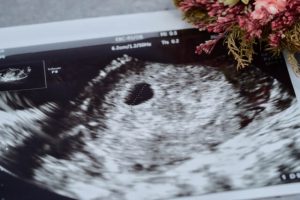Summary of this article
One of the most common problems faced by pregnant women is body dryness. If no measures are taken to prevent dryness, stretch marks can occur and the risk of scars remaining after birth arises. This article introduces the relationship between stretch marks and dryness, the characteristics of moisturising care products, points to consider when choosing them and how to massage them.
Pregnant women are prone to dryness
During pregnancy and after childbirth, women’s bodies undergo significant changes. One of the most common changes is dry skin. If left unchecked, dryness can cause stretch marks to remain after delivery. First, we explain why pregnant women are prone to dryness. Understanding the reasons for dryness can help mothers in the first trimester of pregnancy and mothers who are about to give birth to resolve their problems.
Insufficient fluid and nutritional intake
During pregnancy, the basal metabolic rate increases due to increased amniotic fluid and fat accumulation, which makes it easier to sweat. The amount of sweating can easily lead to a lack of water and nutritional intake, from which skin dryness occurs. To prevent skin moisture from evaporating, it is necessary to maintain the water retention capacity of the stratum corneum. If the stratum corneum lacks nutrition, the turnover of epidermal cells is disrupted and water retention is reduced. This results in dry skin.
Dilation of capillaries
Water evaporation increases during pregnancy due to the dilatation of skin capillaries. Pregnant women need to send nutrients to the foetus via the blood. In order to deliver more nutrients to the foetus, the pregnant woman’s body dilates the capillaries. Increased blood volume and capillary dilation are caused by changes in hormonal balance.
Stretch marks are a common dry problem in pregnant women
Dryness problems in pregnant women include dryness, acne and itching. Stretch marks are one of the most common skin problems, but if dry stretch marks are left untreated, they can leave marks even after delivery, so it is important to take action as soon as possible. Here we introduce basic knowledge about stretch marks, their causes and where they occur. Get knowledge in advance and proceed with countermeasures.
What are stretch marks?
Stretch marks are lines on the skin caused by a tear in the dermis or subcutaneous tissue deep in the skin. During pregnancy, the belly swells and the skin stretches as the baby grows. If the skin is not elastic, it cannot keep up with the stretching and tears, resulting in scars. Of the three layers – epidermis, dermis and subcutaneous tissue – the outermost layer, the epidermis, flexibly expands and contracts as the body changes, but the underlying dermis is not easily stretched, so if it is stretched by a sudden force, a tear can occur. These cracks in the dermis remain as stretch marks.
Dryness increases the risk of stretch marks
Dry skin is more likely to cause stretch marks. As mentioned earlier, stretch marks are caused by a breakdown of the dermis, but dry skin makes the dermis less flexible and more prone to breakdown. Moisturising the skin is therefore essential to prevent stretch marks. Especially in the last trimester of pregnancy, the skin is very thin due to the large expansion of the abdomen. The skin is more prone to dryness, so it is necessary to take measures to moisturise in advance.
Stretch marks occur on skin other than the abdomen
When people hear the name stretch marks, they tend to think of them as marks on the abdomen, but in fact they can occur in places other than the abdomen. Examples include the thighs, arms, breasts and hips, where fat tends to accumulate. As they can occur in places that are difficult to see for yourself, it is important to take measures to keep your whole body moisturised.
Moisturising care methods to prevent stretch marks
Stretch marks are easily caused by dryness, so moisturising care is essential for pregnant women. This section introduces the characteristics of lotions, creams and oils used for moisturising care. To avoid irritating the baby, use a moisturising product that is stretchy and massage the moisturiser into the skin.
Stretch mark care lotion
Stretch mark care lotion is a moisturising product with a smooth texture. It is stretchable and lightweight, so it can be used like a lotion. Recommended for use during hot summer months. Use in combination with cream or oil if you are prone to dryness.
Stretch mark care cream
Stretch mark care creams contain a good balance of moisture and oil. As a result, it has a soft and stretchy texture, yet is characterised by its ability to hydrate and moisturise at the same time. Compared to oil, it is less sticky and does not stain underwear or clothing.
Stretch mark care oil
Stretch mark care oil has a high oil content and excellent moisturising properties. Because it is stretchable, it can be used to massage the abdomen and provide a moisturising solution. However, the high oil percentage may not provide sufficient hydration. If the oil is to be used, it is advisable to moisturise the skin with a lotion first.

3 key points for choosing a stretch mark prevention cream
Many products are currently available for pregnant women, including body creams, stretch mark prevention creams and maternity creams. Some people may be confused about which product to choose. Here are some tips on choosing your favourite stretch mark prevention cream. Use the cream that suits you best, not because it is popular or highly rated, but because you understand its features.
1 Select by the moisturising ingredients included
Stretch mark prevention creams contain a variety of moisturising ingredients. The main moisturising ingredients are hyaluronic acid, ceramide, collagen and glycerin. When choosing a moisturising care product, it is recommended to check the composition and enrichment (ingredient rating). If you have sensitive skin or feel weak with pregnancy, you should choose a moisturising product that contains natural ingredients.
2 Choose by texture
There are three main textures of stretch mark prevention creams: lotions, creams and oils. Each has a different feel and moisturising power, so it is advisable to choose the product that suits your constitution and purpose. Lotion has a smooth feel and is recommended in summer or when you are concerned about sticky skin. Creams have a good balance of moisture and oil and are suitable for those who want to cover all their moisturising needs with just one product. Oils have a high oil content and high moisturising power and are recommended for people whose skin tends to dry out easily.
3 Select according to whether it is fragrance-free and additive-free
Fragrance-free and additive-free stretch mark prevention creams can be used for you and your baby after birth. This eliminates the need to buy a separate cream for children. The hypoallergenic and fragrance-free products are safe to use on the baby’s skin. It is also recommended to continue moisturising the mother’s skin during pregnancy, as the mother’s skin is still prone to dryness after birth. Having one hypoallergenic, fragrance-free and additive-free cream will come in handy during pregnancy and postpartum.
Massage to prevent stretch marks
Avoid driving yourself to hospital when labour pains or your water breaks. There is a possibility that you may drive yourself because you are in less pain and you may become unwell on the way. The pain may suddenly become severe and you may not be able to move. If your condition worsens while driving, you may not be able to drive and this could lead to an accident. Even if your symptoms are mild, ask a family member to drive you or use a labour taxi.
Massage to prevent stretch marks on the tummy
Spread the stretch mark care product around the perimeter in a circular motion around the navel. Relax the skin in a spiral from the waist to the centre of the lower abdomen, from top to bottom. Finally, gently rub the lower abdomen up and down.
Massage to prevent stretch marks in the breasts
Place your hands under both breasts and massage in small circular motions along the breast circumference. Place the other hand under one breast and gently push up and down slowly.
Massage to prevent stretch marks on thighs and buttocks
Massage the thighs and buttocks from the bottom to the top. Unwind in a spiral motion.
One of the main concerns of pregnant women is dry skin, and dryness can lead to the development of stretch marks. Moisturising products used to combat dryness are divided into different types according to texture, such as lotion, cream and oil types. As there are differences in moisture content and moisturising power, it is important to find a product that suits your constitution.
HIRO CLINIC NIPT offers NIPT for pregnant women. Along with physical management, prenatal diagnosis can also prepare you mentally for the birth of your child. Advances in NIPT have now made it possible to detect chromosomal abnormalities in the foetus at an early stage, so pregnant women who want to reduce their anxiety as much as possible should consider undergoing the test.
【References】
- Skin tends to dry out during pregnancy! Know the causes of skin problems and take good care of them | Maternity Care | Useful columns on pregnancy and childcare | Arau. Baby
- Why do stretch marks form? How to take care of them to prevent them and when to start
- Which stretch mark prevention cream do midwives recommend? How to apply it and when to use it are also explained – EPARK Pharmaceutical Window Column|Healthcare Information
- Basic knowledge of stretch marks and advice on moisturising care | Mum’s first support site | Pigeon Info
Q&A
-
QWhat are the characteristics of people prone to stretch marks?Stretch marks do not always appear on pregnant women. However, some types of people are more prone to stretch marks than others.
For example, the characteristics of people who are prone to stretch marks are as follows.
・People who are thin and have a thin body. ・People who are short and petite. ・People with dry skin. ・People who have given birth at an early age. ・People who have given birth at an older age. ・People with multiple pregnancies. -
QWhen should I start moisturising to prevent stretch marks?It is recommended that stretch mark prevention creams are used from early pregnancy. Stretch marks are more likely to form after five months, when the belly enters the stable period and begins to grow rapidly. Therefore, it is advisable to start moisturising early, test the products and develop a moisturising habit. Early moisturising measures to prevent the skin from drying out will help to keep the skin supple and prevent stretch marks from forming.
-
QWhat should I do if I get stretch marks?Once they develop, stretch marks never disappear completely. After birth, they become whitish and less noticeable. Continuous moisturising and massage are important if you do not want stretch marks to remain.
Article Editorial Supervisor

Dr Hiroshi Oka
NIPT specialist clinic, MD
Graduated from Keio University, School of Medicine
 中文
中文






















